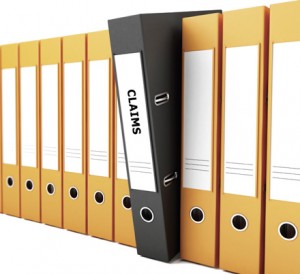– March 1, 2010
 I recently wrote about bad faith concerns with reinsurance companies when a cedent company fails to have written procedures in my post Absence of procedures to notify reinsurance is a basis for bad faith. In the post I also raised issues around having written procedural guidelines. As expected, I received some comments and support from those who want to use those guidelines against the company. In addition, some pointed out claim guideline requirements of some state insurance departments for some lines of business. Before drafting guidelines there are a few things that should be considered. Our friend Phil Loree, Jr. of the Loree Insurance and Arbitration Law Forum suggested 7 things a company should consider when drafting claims guidelines.
I recently wrote about bad faith concerns with reinsurance companies when a cedent company fails to have written procedures in my post Absence of procedures to notify reinsurance is a basis for bad faith. In the post I also raised issues around having written procedural guidelines. As expected, I received some comments and support from those who want to use those guidelines against the company. In addition, some pointed out claim guideline requirements of some state insurance departments for some lines of business. Before drafting guidelines there are a few things that should be considered. Our friend Phil Loree, Jr. of the Loree Insurance and Arbitration Law Forum suggested 7 things a company should consider when drafting claims guidelines.
7 Issues to consider when drafting
Phil writes:
In this day and age of internal controls and corporate responsibility, it seems to us that appropriate written claims guidelines and procedures can benefit insurers, cedents and reinsurers, provided they are carefully drafted, implemented and managed. We offer the following, very general and non-exclusive list of things companies might consider:
1. If written claims procedures are to be adopted and implemented they should be carefully prepared by claims experts and reviewed by experienced counsel. Poorly drafted and ill-conceived written claims procedures are probably worse than none at all.
2. Careful thought should be given to privilege issues associated with in-house or outside attorney review of draft guidelines and the involvement of counsel in other aspects of the drafting and implementation process. The process should be carefully managed and attention should be paid to the company’s document retention policies as respects the maintenance or destruction of drafts. Remember, in a future litigation or arbitration the insured’s attorneys will likely request prior drafts and depositions of all involved in the preparation and implementation process. While the insured may or may not be successful in obtaining all the discovery it seeks, it will likely get at least some of it.
3. Written claims procedures should be drafted to confer upon claims personnel an appropriate degree of discretion where such discretion is appropriate. Locking adjusters into particular claims positions without regard to the facts, circumstances and practical realities can cause a myriad of problems.
4. To the extent claims procedures provide a certain period of time within which a particular action must be taken, and to the extent that the period is not an inflexible one provided by law or contract, flexibility should be built in to account for minor delays caused by special circumstances or the press of business.
5. If written claims guidelines and procedures are to be adopted, the company should ensure claims personnel take them very seriously and do their best to abide by them at all times.
6. Written claims procedures should be subject to periodic review by in-house counsel and the claims department to ensure that they comply with current legislation and recent case law developments.
7. Outside counsel handling coverage or other, claims-related matters for the company should keep the company’s general counsel apprised of any problems that might be caused or exacerbated by written guidelines and procedures.
Some additional thoughts
As Phil notes, periodic review of guidelines should be done to ensure compliance with current laws. I would also recommend that when procedures change review guidelines to make sure they are consistent with those new procedures. The ultimate goal of guidelines should be to help handlers review claims effectively, within the terms of the policy, as well as to resolve matters fairly and expeditiously. Remember that different lines of business may have different requirements so consider line of business nuances and address them accordingly.
Claims departments employ professionals that want to do a good job for policy holders as well as the company, and guidelines should help foster those goals.

 Linkedin
Linkedin Twitter
Twitter
All excellent points to creating effective guidelines!
#6 is especially important in today’s constantly-evolving business world. Trending activities and outdated laws can come and go in an instant, and it’s good to note that the review of your company’s guidelines should be done regularly.
It’s important to keep risk management basics in mind when creating policies to avoid future confusion (or worse!).
Marc,
Great post as usual. Thanks so much for quoting our post, which was inspired by your original one.
I think your proactive position on claims manuals is a good one for companies to adopt.
Craig, I’m glad you liked #6, and I agree with you and Marc 100% about keeping guidelines and procedures up to date with not only current law, but with newly-instituted procedures.
Phil
I partially disagree with #4. Making the three point contact (employee, Dr., and employer) on Workers Comp claims within 24 hours can never be subjugated to delays, etc. WC claims are basically set in stone after 48 hours. I have shown this statistically many times.
James
Excellent point – and it is a good reminder that there are guidelines that are governed by regulations that must be adhered to. This is especially true of regulations surrounding Workers’ Comp and others relating to personal auto and property damage.
Thanks for the comment.
Marc
Very nice general overview and spot on…….